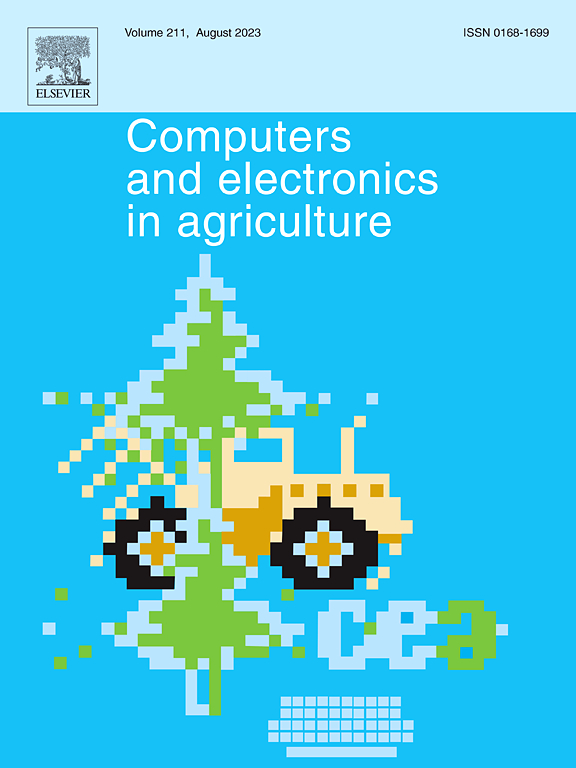Study on seeding delay time and lag distance of automatic section control system for maize seeder
IF 7.7
1区 农林科学
Q1 AGRICULTURE, MULTIDISCIPLINARY
引用次数: 0
Abstract
Automatic section control (ASC) can effectively reduce the double-seeded area by controlling start and stop seeding automatically, thereby saving seeds and increasing yields. Seeding delay time (SDT) and seeding lag distance (SLD) are core factors that affect the accuracy and reliability of ASC systems. To explore the influence factors and variation patterns of SDT and SLD, this study developed an ASC system for maize seeder. The system can determine the position of each seed metering device based on a GNSS antenna, and automatically control the status of the motor of the seed metering device based on relative position between the seed metering device and the field. Theoretical analysis revealed that the angle between the seed and the seed drop point caused the start seeding delay time and start seeding lag distance (STLD) to be greater than the stop seeding delay time and stop seeding lag distance (SPLD), and the difference between the two lag distances is one seed spacing. The constructed SDT and SLD models showed that both SDT and SLD were also related to GNSS frequency and operational speed. To verify the accuracy of the model, field experiments were carried out based on GNSS frequencies (1, 5, 10 Hz) and operational speeds (4, 5, 6, 7, 8 km/h) with a seed spacing of 0.2 m. The field experiments showed that STLD was 0.703–2.191 m, and SPLD was 0.559–2.626 m, with STLD generally greater than SPLD, a difference of nearly one seed spacing. SLD was negatively correlated with GNSS frequencies and positively correlated with operational speed. GNSS frequency and operational speed had significant influences (p < 0.001) on SLD. The correlation coefficients between SLD and the SLD model ranged from 0.54 to 0.90. Seed bouncing and seeder vibration caused a relative error of 4.51 % to 21.69 % in the SLD model. In conclusion, the SLD model can well describe the variation patterns and the significant influence of the actual SLD. The validation results of the SLD model indirectly supported the validity of the SDT model. The methods and results of this study can provide a reference for the development and optimization of ASC systems.
求助全文
约1分钟内获得全文
求助全文
来源期刊

Computers and Electronics in Agriculture
工程技术-计算机:跨学科应用
CiteScore
15.30
自引率
14.50%
发文量
800
审稿时长
62 days
期刊介绍:
Computers and Electronics in Agriculture provides international coverage of advancements in computer hardware, software, electronic instrumentation, and control systems applied to agricultural challenges. Encompassing agronomy, horticulture, forestry, aquaculture, and animal farming, the journal publishes original papers, reviews, and applications notes. It explores the use of computers and electronics in plant or animal agricultural production, covering topics like agricultural soils, water, pests, controlled environments, and waste. The scope extends to on-farm post-harvest operations and relevant technologies, including artificial intelligence, sensors, machine vision, robotics, networking, and simulation modeling. Its companion journal, Smart Agricultural Technology, continues the focus on smart applications in production agriculture.
 求助内容:
求助内容: 应助结果提醒方式:
应助结果提醒方式:


